- About Us
- Bearings
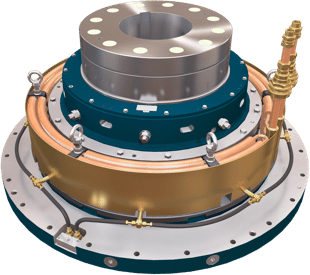 Vertical Bearings
Vertical Bearings
- AV Series
AV
LV SeriesLV
MV SeriesMV
V SeriesV
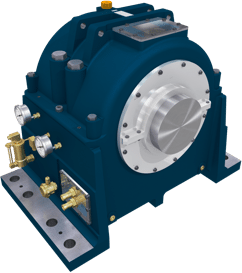 Horizontal Bearings
Horizontal Bearings
- HD Series
HD
IH SeriesIH
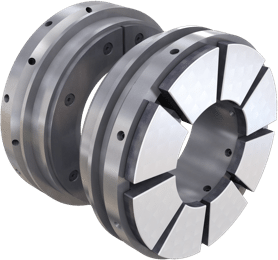 Tilting Pad Bearings
Tilting Pad Bearings
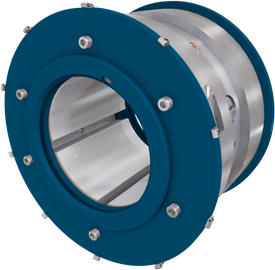 Journal Bearings
Journal Bearings
- Journal Pad Units
Journal
 Thrust Bearings
Thrust Bearings
- SE Series
SE
Omega EqualisedOmega
OmegaOmega
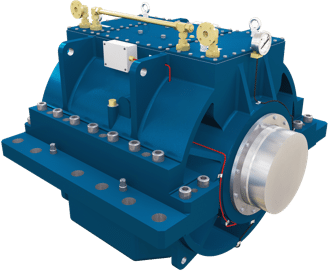 Marine Bearings
Marine Bearings
- Marine Gearbox Internals
Marine
Marine Propulsion Motor
and Generator BearingsEnter your email to download the full paper
"*" indicates required fields
Outline
Home > PTFE Faced Thrust Bearings: State of the Art Review and Hydro-generator Applications in the UKPTFE Faced Thrust Bearings: State of the Art Review and Hydro-generator Applications in the UK
J E L Simmons, Heriot-Watt University, UK and R T Knox, Michell Bearings, UK.
Abstract
Although other materials have been examined, whitemetal, with its well known strengths and weaknesses, remains the world’s preferred choice as the facing material in most heavy duty, hydrodynamic bearing applications. An important exception is the countries of the former Soviet Union (I) and China where, prompted by a series of persistent bearing failures in the 1960’s and 1970’s, PTFE lined thrust pads have been developed for major thrust bearing applications. By 1990, PTFE faced thrust bearings had been installed in the majority of hydro-electric power stations of the Soviet Union (2). Much higher operating loads (up to 6.5 MPa) than usual for whitemetal bearings are claimed. Start up loads are also higher and high pressure forced lubrication systems at start up and shut down are eliminated.
P1FE is suggested (3) as having a number of benefits as a bearing surface (very low coefficient of friction when paired with steel (0.04 – 0.09), chemical stability, excellent dielectric properties) and an important negative feature in that its mechanical properties are highly temperature dependent. Thus, a temperature rise from 20°C to S0°C leads to a decrease in compressive strength by a factor of three. Even more significant, PTFE is subject to excessive creep, that is to say deformation under load, even at low temperatures. These latter properties prevent PTFE being used as a bearing facing material in an unmodified form. The design approach adopted (1, 4) involves the application of sheet P1FE to a liner made from wire coils. The PTFE is applied under pressure which causes it to flow into gaps in the wire coil to a depth of 1 mm to 1.5mm. In this way a firm bond is formed between the PTFE facing material and the wire coil under-layer.
Based on guidance contained in the literature together with much previous experience in the design of whitemetal bearings, a PTFE faced thrust pad design has been developed for applications in the UK and elsewhere. As recommended, the pads comprise a steel backing, a wire mesh intermediate layer and the PTFE bearing surface. An extensive factorybased experimental programme has been carried out to prove the design. Four offset pivot pads with a total working surface of 60940mm2 were fitted in a standard bearing assembly and subjected to a wide range of duties with specific loads up to 10. l MPa and rotational speeds of 1500 rev/min, equivalent to 35.5 m/sec at the mean pressure diameter of the bearing.
The pilot PTFE pads performed well in practice even though loads were applied considerably in excess of the usual maximum service loading for whitemetal bearings of 3.5 to 4 MPa. On completion of the experiments, the P1FE pads were closely inspected and found to be in excellent condition. The results of the experimental work were sufficiently promising to encourage the decision to proceed with an initial industrial application at a major UK facility.
A set of PTFE faced pads were designed for a unit at the Ffestiniog Power Station, North Wales, a pumped storage scheme completed in the 1960’s. The 12 pads, with a total bearing surface area of 1.07m2, were installed in September 1996 and removed for inspection on 4 May 1997. In this period the bearing experienced over 2000 hours of operation including almost 900 separate times when the unit was started up under load. Full examination of the pads showed them to be in excellent condition with no signs of wear. The pads will next be re-examined in two years time.
The results of this work point encouragingly to the potential for the wide application of PTFE faced thrust bearings in many other hydro-generator applications. The team involved in the current work expect to commence further trials at Dinorwig, one of Europe’s largest power plants, later in 1997.
The full version of this paper has been submitted to the IMechE, Journal of Engineering Tribology.
ACCESS FULL PAPERRecommended articles
Size-for-Size Comparisons of PTFE Faced Thrust Bearings in Two Applications with Correlation Against Analysis
The Development of a PTFE Faced Thrust Bearing for Dinorwig Pumped Storage Power Station
The Development of PTFE Faced Thrust Bearings for Hydro Generator Power Plant
Two Case Studies for the use of PTFE Thrust Bearings in Hydropower Applications
Michell Bearings
Waldridge Way,
Simonside East Industrial Park,
South Shields,
NE34 9PZ.Tel: +44 (0) 191 273 0291
Email: sales@michellbearings.com
Email: hrteam@britishengines.com
Email: recruitment@britishengines.com© Michell Bearings.
Registered Office Address: 11 Glasshouse Street, St Peter's, Newcastle upon Tyne. NE6 1BS. Company registered in England and Wales no. 9390648

 PTFE Bearings
PTFE Bearings